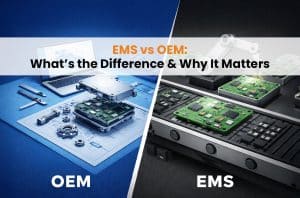Introduction :
The aerospace sector represents the pinnacle of technological breakthroughs, with each component critical to aircraft and spacecraft’s safety, efficiency, and reliability. Printed circuit boards (PCBs) have developed as essential components for integrating sophisticated electronic systems. In this blog article, we’ll look at how PCBs are helping to advance aerospace technology, revolutionize air and space travel, and push the bounds of human exploration.
1. Lightweight Design and Space Optimization
Weight reduction and space optimization are critical in aerospace engineering because they directly influence fuel efficiency, cargo capacity, and overall performance. PCBs contribute significantly to weight savings because of their lightweight design and space optimization capabilities. PCBs can be created with thin layers and optimized layouts using sophisticated manufacturing techniques and materials, reducing weight and improving space utilization. Because of this advantage, aerospace engineers may maximize payload capacity, enhance fuel efficiency, and build aircraft with better range and endurance. Furthermore, PCBs allow for the tight integration of electrical components, improving space optimization and incorporating advanced systems and functionalities.
2. High-Speed Signal Transmission
High-speed and high-frequency signal transmission is crucial for effective data communication and system operation in the aerospace sector. PCBs with regulated impedance and optimized trace routing are critical for low-loss and distortion signal transmission. These specialized PCBs facilitate the integration of modern communication systems, data linkages, and avionics, allowing vital functions such as radar systems, satellite communication, and flight control to be performed. PCBs contribute to aircraft systems’ safety, precision, and efficiency by assuring dependable and high-speed signal transmission, allowing pilots and ground control to make informed decisions based on real-time data.
3. Harsh Environment Adaptability
Aerospace systems work in harsh conditions such as high altitudes, temperature fluctuations, humidity, and vibrations. PCBs for aircraft applications are specifically built to survive these severe circumstances. Extensive testing and adherence to strict quality standards assure their resilience and dependability in harsh conditions. PCB in-flight systems have specialized materials and coatings that improve stability to temperature changes, moisture, and mechanical loads. Because of their durability, PCBs may perform consistently in aerospace conditions, assuring the uninterrupted operation of vital systems and reducing the chance of failures that could affect safety and mission success.
4. System Integration and Reliability
The necessity of smooth system integration and reliability in aeronautical applications cannot be overstated. PCBs are the foundation for combining electronic components such as microprocessors, sensors, actuators, and communication systems. PCBs provide effective communication and coordination between diverse subsystems by providing a component interconnection platform, improving overall system performance. PCBs’ dependability is due to their tight quality standards, innovative production techniques, and rigorous testing procedures. This dependability ensures that aeronautical systems perform as intended, even under extreme operational situations.
Conclusion
The importance of PCBs in advancing aeronautical technology cannot be emphasized. PCBs have become essential in the aerospace sector, contributing to lightweight design and space optimization, enabling high-speed signal transmission, responding to hostile environments, and assuring system integration and durability. PCBs help the creation of safer, more efficient, and dependable aircraft and spacecraft by constantly pushing the boundaries of technical innovation. As the aerospace industry evolves and new challenges emerge, PCBs will continue to play an essential role in enabling breakthroughs that redefine air and space travel and determine the future of aerospace technology. Roots EMS provide the best PCB Assembly services for aerospace industry


